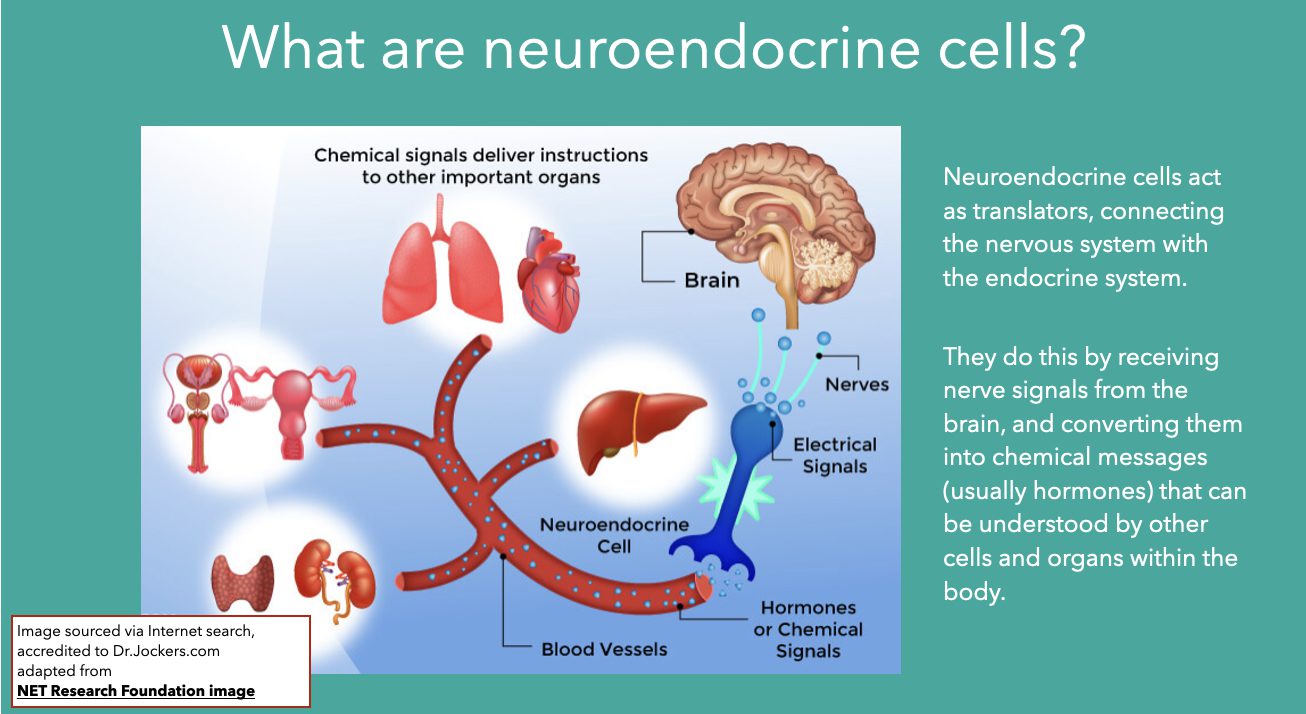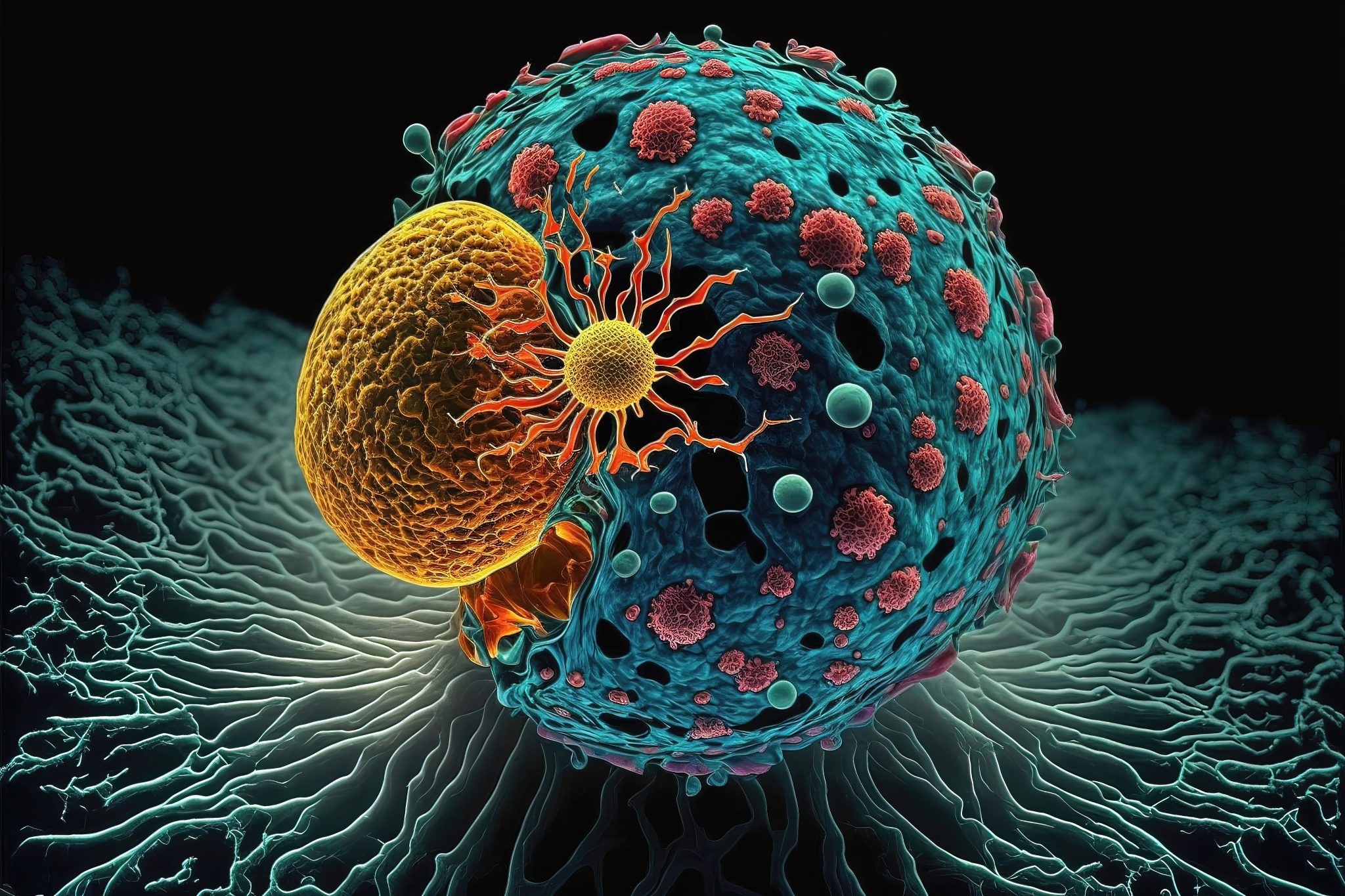In this section, you’ll discover up-to-date and reliable information covering various aspects of this complex disease. From exploring the intricacies of the endocrine and neuroendocrine systems to delving into the science behind neuroendocrine tumours, staging, grading, and differentiation, we aim to provide you with a thorough understanding.
Learn about differentiating between functioning and non-functioning neuroendocrine cancers, the role of genetics, primary sites, and metastatic cancers. We’ll also discuss associated syndromes, hormonal imbalances, and potential complications, including insights into high-grade carcinomas.
Whether you’re newly diagnosed or seeking deeper insights, our resources are here to empower you with knowledge and understanding every step of the way.

Select the image to learn more
The Neuroendocrine System
The neuroendocrine system, comprising glands and nerve cells, regulates essential bodily functions by releasing hormones into the bloodstream. Neuroendocrine cancers arise when cells in this system mutate, leading to abnormal growth and potentially cancerous tumours. Select the image to learn more.
How Neuroendocrine Cancers are Formed
Neuroendocrine cancers arise from cells in the neuroendocrine system, which comprises hormone-producing cells found throughout the body. These cancers typically develop slowly and can originate in various organs, such as the lungs, pancreas, intestines, and stomach. Select the image to learn more.
Genetics
Most neuroendocrine cancers occur ‘sporadically’, this means that there is no known genetic (inherited) link to how or why they have developed. However, there are a number of rare inherited genetic conditions that may increase someone’s risk of developing neuroendocrine cancer. Select the image to learn more.
Primary and Secondary Sites
The primary site refers to where your neuroendocrine cancer started to grow. Primary site matters because it can influence how and why symptoms may occur. It can also make a difference in what treatment is used. Select the image to learn more.
Staging and Grading (including Differentiation)
Dive into the aspects of staging and grading, encompassing differentiation, to understand the extent and severity of neuroendocrine tumours, aiding in treatment decisions and prognosis assessment.
Hormones
Learn about various hormones, their functions, and potential symptoms or syndromes associated with their imbalance or abnormal secretion.
Metastatic or Secondary Cancer
Gain insight into metastatic or secondary neuroendocrine cancer, understanding how cancer spreads beyond the primary site and its implications.









